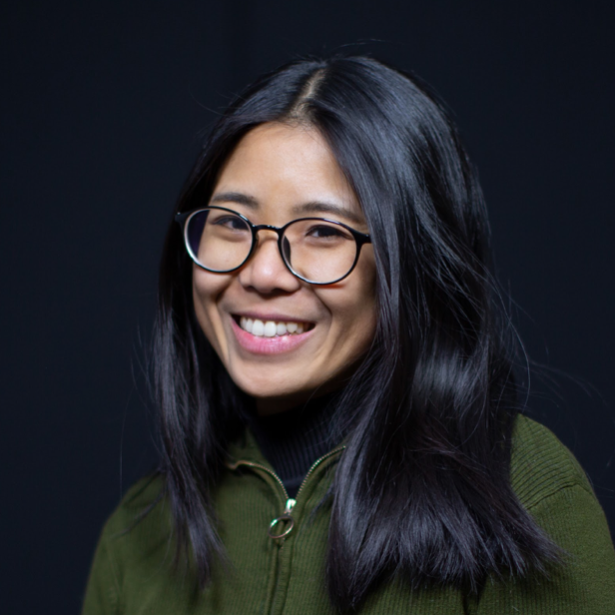Interview with Evanston Art Center Exhibiting Artist: Jiaqi Zhang

How does your educational background inform your current artistic practice? What other interests influence your work?
I explored a variety of things that I was interested in and my educational background is messy because of it. I have a BA in English Studies, an AAS(Associate of Applied Science) in Fashion Design, and an MFA in Art and Technology Studies. All the different approaches I took led me to art as a tool for self-reflection and expression. Those disciplines influence my artistic practice in some way or another. For example, some projects that are going to be shown at the Evanston Art Center are related to text and voice translation. In my undergraduate studies, I had training for simultaneous interpretation. It required you as an interpreter to translate the message from the source language to the target language in real-time. For my case, it was between English and Chinese. The goal is to translate as accurately as possible, the same for many machine-aid translation apps nowadays. Which is no doubt necessary if the objective is to deliver a message/information. However, when thinking of human and technology relationships, what I appreciate the most is what they hate the most -- mistakes and misunderstandings. This process of rediscovering something once familiar with a different perspective is crucial for my self-reflection.
I have many other interests, and that's why I enjoy collaborating with people from different disciplines, allowing me to learn from their perspectives. But what influenced me the most is socially engaged art, the practice of which guides all my interests to one core --relation building. The art education I received promoted self-exploratory practice, which was very confusing to me at the beginning. It was like exploring for the sake of exploring, making art for the sake of art. While only getting to know about socially engaged artworks like Pigeonblog by Beatriz Da Costa and Santiago Sierra's series of works related to labor and immigrants, I felt more grounded than ever. Many of the socially engaged artworks relate to activism and political issues, while mine are not, a socially engaged practice helps me know what is important to me in the process of making.
Like many social and collaborative fields, the arts have been greatly impacted by the current pandemic and the physical limitations it’s imposed on us, but I’m particularly interested in how your work has been impacted or adapted to our current reality-considering your exploration of experiences and sensual perceptions crossing between the physical and technical realms.
Luckily, many of the ongoing projects have not been impacted so much because I have been transiting to more digital-based tools like virtual reality and websites before the pandemic. It all started after graduating from school, it was very costly to have access to all kinds of fabrication tools, making something physical becomes challenging. Also, as a non-resident, my current state is very unstable. I might be in another city or another country in the next couple of years, which I don't know yet. So it is a practical decision to move towards digital projects for being nomadic.
Still interested in the magical energy between the physical and digital realm, my approach was to support other artists who shared the same interests through curation. It gave me the ability to be nomadic at the same time I can continue to explore ideas that I am interested in. One festival that I was curating in October did get impacted by the pandemic. It was challenging to follow guidelines, peoples' expectations, and make a good exhibition. Many shows moved online, however, ours focused on sensory experience, which didn't make sense just to be simply moved online. Meanwhile, it was extremely tricky to have a show like that during a sensitive pandemic time. We altered the physical space to make the audience safely distanced, curated VR projects with no-contact reactive installations to spread out the audience flow. Gladly, with my collaborator, we made it through before the advisory lockdown. And audiences appreciated this experience during such a difficult time.
Back in May you performed “吃了吗? Have you eaten?” virtually for EAC visitors, where you chatted with someone through a translation app, so both parties could communicate in their native language. How was this piece received? How does it connect to your upcoming project at the EAC in February?
It was very lucky to be able to reach out to strangers and some of my friends through this virtual performance. I believe the experience for them and me were completely different. I was speaking Chinese while the majority of them spoke English. Their understanding of what I said was based on the translation app while I could understand what they said before I read the translation. That made the conversation saner than I expected. It went very bizarre when one of the participants spoke Polish and the translation app did not have Polish in their database. What he said could not be translated and both of us have no idea of anything in that conversation. He told me later that he felt the experience was surreal. If you watch the documentation of that probably couldn't get much from it, because it will not be an engaging experience, other than observing others. It is something you have to experience, the human connection, language barrier, facial expression, and everything else other than understanding each other through language. It is the opposite of that. It is to make a human connection between what was translated wrong, and what we misunderstood. What left was that emotional experience we shared without an understanding of anything.
This idea extends to the upcoming exhibition at the EAC. The text-based translation will be a core interaction feature. There will be two projects that require the audience to use a translation app to explore. Many of my projects are physically interactive, and this will be something interactive without much touching during the pandemic. The exhibition will be a combination of new projects and past works. One of the new projects will be an interactive story in collaboration with small businesses in Evanston. Linking to my previous work People Through Peephole, which invites the audience to look through a picture about the history of human technology with limited vision. And they are free to write down whatever they see and leave notes for the next audience. The theme of the exhibition centers around language as an information carrier and human connection within misinformation.
Can you elaborate on your curatorial practice, specifically your participation in Fixity Equals Death and Commiserate Chicago? How did you begin curating? What advice would you offer to young artists or scholars looking to get involved?
It all started from an exhibition and biennale class where I proposed an online platform for native digital artworks as the final project. It led me to know Francisca Rudolph who studies art history and arts administration at SAIC. And I joined her project which was Fixity Equals Death. Later on, with a group of friends who share the feeling of how cold Chicago was, the same for the new media art scene here. Commiserate Chicago was born to make a festival that was different than other major new media art festivals in cities like New York and Los Angeles. We did everything ourselves, from trying to get funding, setting up the website, releasing open calls, doing graphic design, and marketing. From both experiences, I gained a lot by working with my brilliant friends. This also made me realize that it was so difficult without any institutional support and funding to curate/produce an exhibition. And that led to the Altered Festival which I collaborated with a local business to have space and facilities to exhibit exciting projects.
I would not say that I am an expert curator who can give others golden advice as I am still trying to figure it out by doing it. But I would love to share my experience from the do-it-ourselves approach. All the limitations and restraints are my inspiration to try something. And having a group of supportive friends will make the journey more fun. External collaborators, no matter it is an institution, business partner, or anything you can think of would be helpful.
Learn more about Jiaqi's EAC Exhibition.
ABOUT CONCENTRICS

Concentrics is a quarterly interview series featuring EAC Exhibiting Artists, Faculty Members, Board Members and Students.
Find out how our faculty and board members started at EAC and why our students love it here. We want to give you a look into the community that makes up the Evanston Art Center!

